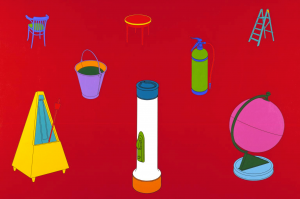Michael Craig-Martin: On Being An Artist
Michael Craig-Martin’s informative book reads about his own life experience throughout his early schooling, art education, career, and his own inspirations. He offers a subjective tone, with views that some readers will and some readers will not agree with. He is able to elicit a response with his writing. For example, he writes that pieces of work ‘are not mute, waiting for interpretation’ (P12) but express an insight into the artist themselves, as though the artist is therefore open to exposure and intrusion after releasing their work. To me, this vulnerability in an artist is rife. Craig-Martin expresses from the start of the book that his snippets of writing throughout the years have been successfully compiled, and are open pieces of potential advise. If they can offer advise to aspiring artists, that is only a positive. It also has autobiographical elements as he discusses his childhood, university dilemmas, also rejoicing in his successes, and even opens up about his married life.
‘Our job was to create whatever it was that would come next.’ (P63)
The reader gets an insight into Craig-Martin’s modernism approaches. The quotation above explains the mindset of him and his Yale classmates and their endeavors into artist-hood. Having Marcel Duchamp as one of his most poignant Modern Art influences, Craig-Martin’s mindset of pushing current boundaries forward is evident throughout the book.
What I have taken enthusiastically from the book are Craig-Martin’s two pieces of work ‘Knowing’, held at the Tate, and ‘Learning’. I was struck by how he ‘resists the arbitrariness of colour’. The items are common in both acrylic paintings, however the positioning of them varies depending the title of the piece. To the right, ‘Knowing’ shows the accomplishments of man with the globe and metronome catching the eye first. Whereas, in ‘Learning’, the red table, blue chair and blue stepladder are in the foreground of the painting suggesting the stages of education. What is involved in the stages between Learning and Knowing is demonstrated.
Bibliography:
CRAIG-MARTIN,M. (2014) On Being An Artist, United Kingdom.
http://www.tate.org.uk/art/artworks/craig-martin-knowing-t07234


